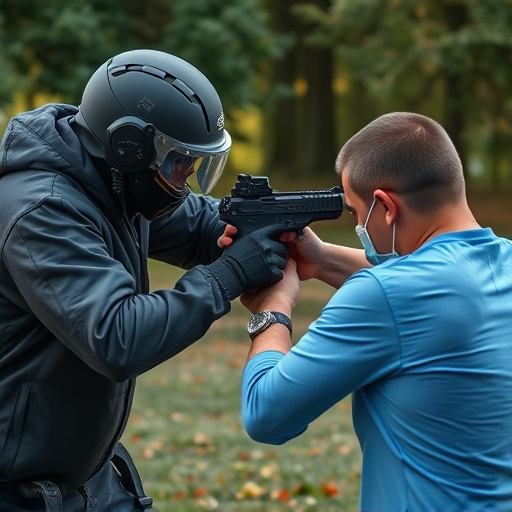Selecting bulk stun guns for retail stores requires understanding electrical pulse frequency and its impact on effectiveness and safety. Frequencies between 100 kHz and 3 MHz, with higher values delivering stronger stun effects, are common in these devices. Retailers offer adjustable settings to cater to diverse needs and local regulations. Prioritizing customer and public safety, retailers should choose certified models with optimized pulse parameters, durable designs, easy-to-use triggers, and long-lasting batteries while staying updated on local laws regarding stun gun specifications to ensure responsible sales practices.
“Unraveling the science behind electrical pulse frequency in stun guns is crucial for both consumers and retailers. This article explores the intricate details, starting with a simplified breakdown of pulse frequency concepts. We delve into how stun guns leverage these frequencies for their effectiveness, focusing on bulk stun guns destined for retail stores. Additionally, we examine safety and legal considerations associated with high-voltage pulses, offering insights that empower both buyers and sellers in making informed decisions.”
- Understanding Electrical Pulse Frequency: The Basics
- How Stun Guns Utilize Pulse Frequency
- Bulk Stun Guns for Retail Stores: Considerations and Factors
- Safety and Legal Implications of High-Voltage Pulse Frequencies
Understanding Electrical Pulse Frequency: The Basics
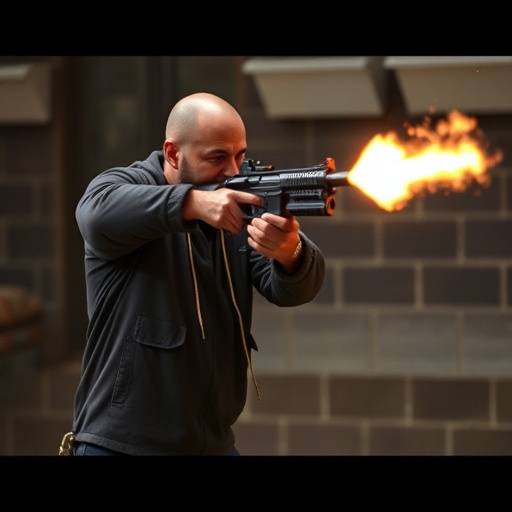
Understanding electrical pulse frequency is key when considering bulk stun guns for retail stores. Stun guns, also known as electroshock weapons, emit a brief electric current that disrupts the muscle control in an attacker, causing them to lose balance and strength. The force behind this disruption comes from the electrical pulse frequency—the number of times these high-voltage, low-amperage pulses are delivered per second.
Frequencies typically range from 100 kHz to 3 MHz, with higher frequencies generally producing more intense stun effects. Bulk stun guns for retail stores often feature adjustable settings, allowing customers to select the appropriate pulse frequency based on their needs and local regulations. This versatility ensures that users can find a device suitable for their level of training and the types of threats they might encounter.
How Stun Guns Utilize Pulse Frequency
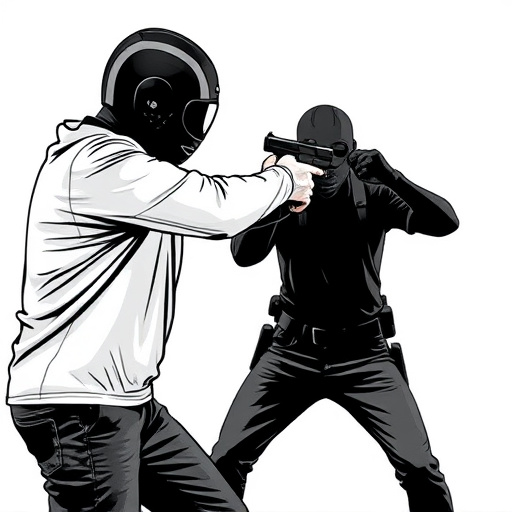
Stun guns utilize electrical pulse frequency to temporarily disable or stun a target, making them popular self-defense tools for personal safety. The device emits a series of rapid and high-voltage electrical pulses that disrupt the nerve signals in the body, causing muscle spasms and immobilization. This effect is achieved through precise control of the pulse’s frequency, amplitude, and duration.
In bulk stun guns for retail stores, manufacturers often optimize these parameters to balance effectiveness with safety. The pulse frequency typically ranges from 100 to 300 pulses per second (Hz), ensuring a strong enough shock while maintaining a relatively compact design. This technology allows users to deploy the weapon quickly and effectively in various self-defense scenarios, making bulk stun guns a popular choice for retailers catering to personal safety advocates.
Bulk Stun Guns for Retail Stores: Considerations and Factors
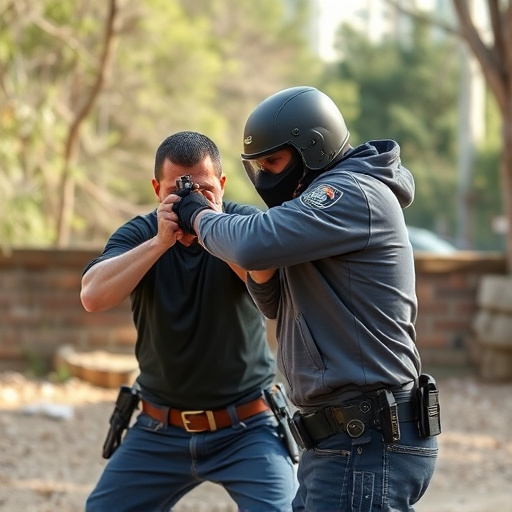
When considering bulk stun guns for retail stores, several key factors come into play. The primary consideration is safety and effectiveness—ensuring that the stun guns meet industry standards and deliver a powerful enough shock to deter potential threats while minimizing risk to users and bystanders. Retail stores should opt for models certified by reputable testing agencies, with a focus on devices that emit electrical pulses at frequencies optimized for neutralizing attackers without causing serious harm.
Another critical aspect is the stun gun’s design and durability. Bulk purchases require products that are not only reliable but also resilient enough to withstand frequent handling and storage. Retailers should look for models featuring robust construction, easy-to-use triggers, and durable batteries, ensuring that the stun guns maintain their performance over time. Additionally, considering the legal implications and local regulations regarding stun gun ownership and sales is essential to ensure compliance and avoid legal complications.
Safety and Legal Implications of High-Voltage Pulse Frequencies
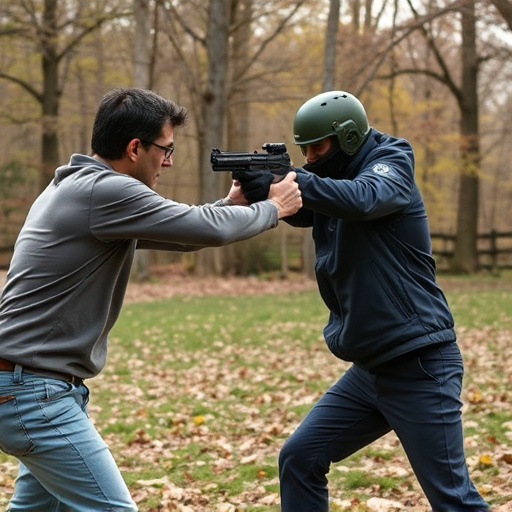
When considering the electrical pulse frequency in stun guns, safety and legal implications must be at the forefront. High-voltage pulse frequencies, often found in more advanced or specialized models, can pose significant risks if not used properly. These devices deliver a powerful electric shock, capable of incapacitating an individual, but they also carry potential dangers for users and bystanders alike. In many regions, regulations strictly control the availability and usage of stun guns with high-voltage outputs to ensure public safety.
For bulk stun guns intended for retail stores, these considerations are paramount. Lower pulse frequencies are generally recommended for general-use models to minimize harm while still providing effective deterrence. Retailers should stay informed about local laws and guidelines regarding stun gun specifications, including maximum voltage and pulse rate limits. Adhering to these standards not only ensures compliance but also cultivates a responsible sales environment, making bulk stun guns safer options for customers seeking personal protection.
When considering bulk stun guns for retail stores, understanding the electrical pulse frequency is key. These devices rely on specific frequencies to deliver a safe yet effective shock, with higher voltages requiring careful consideration due to potential safety and legal implications. Factors such as pulse duration and amplitude also play crucial roles in performance and user experience. By balancing these elements, retailers can offer effective self-defense tools while adhering to relevant regulations.
